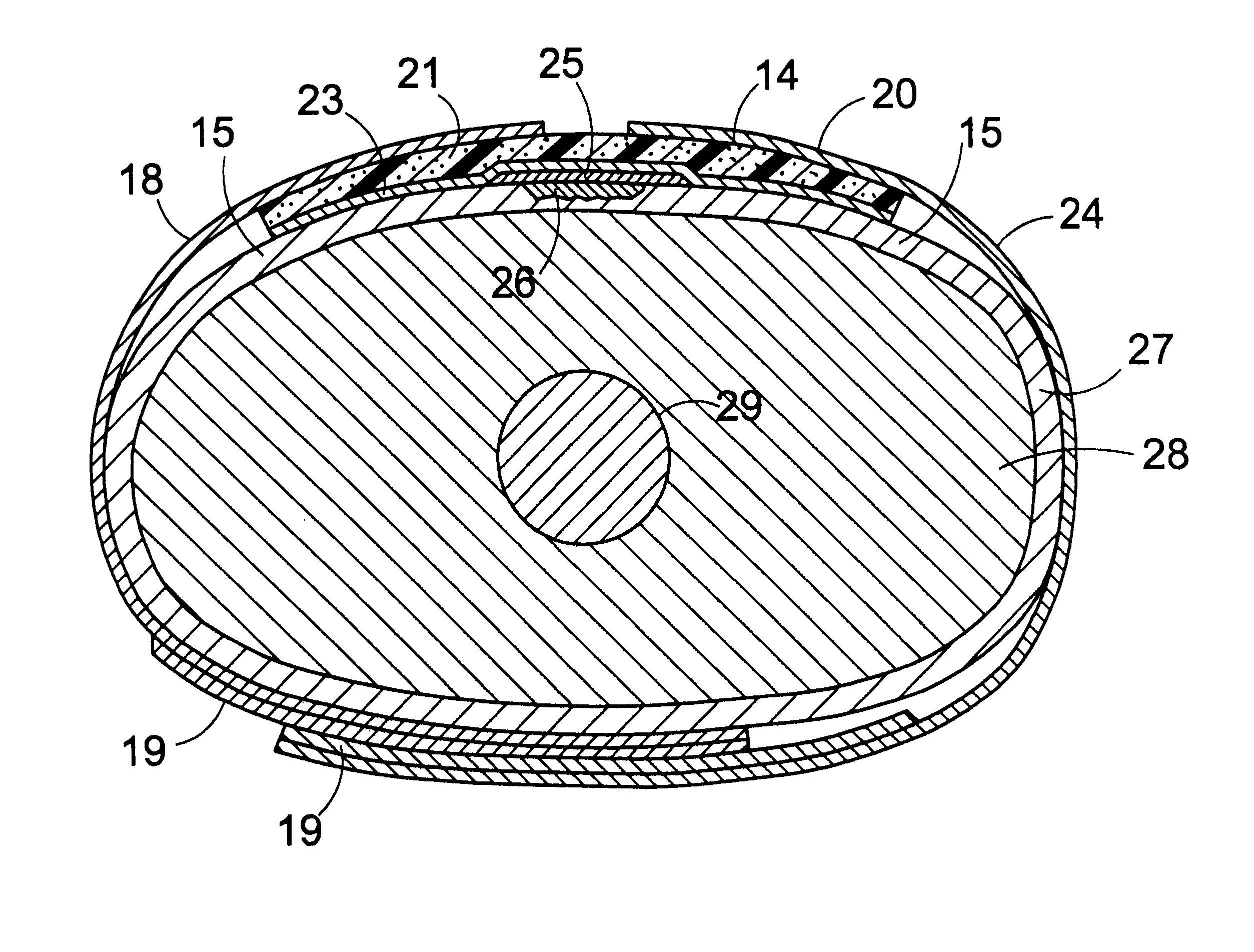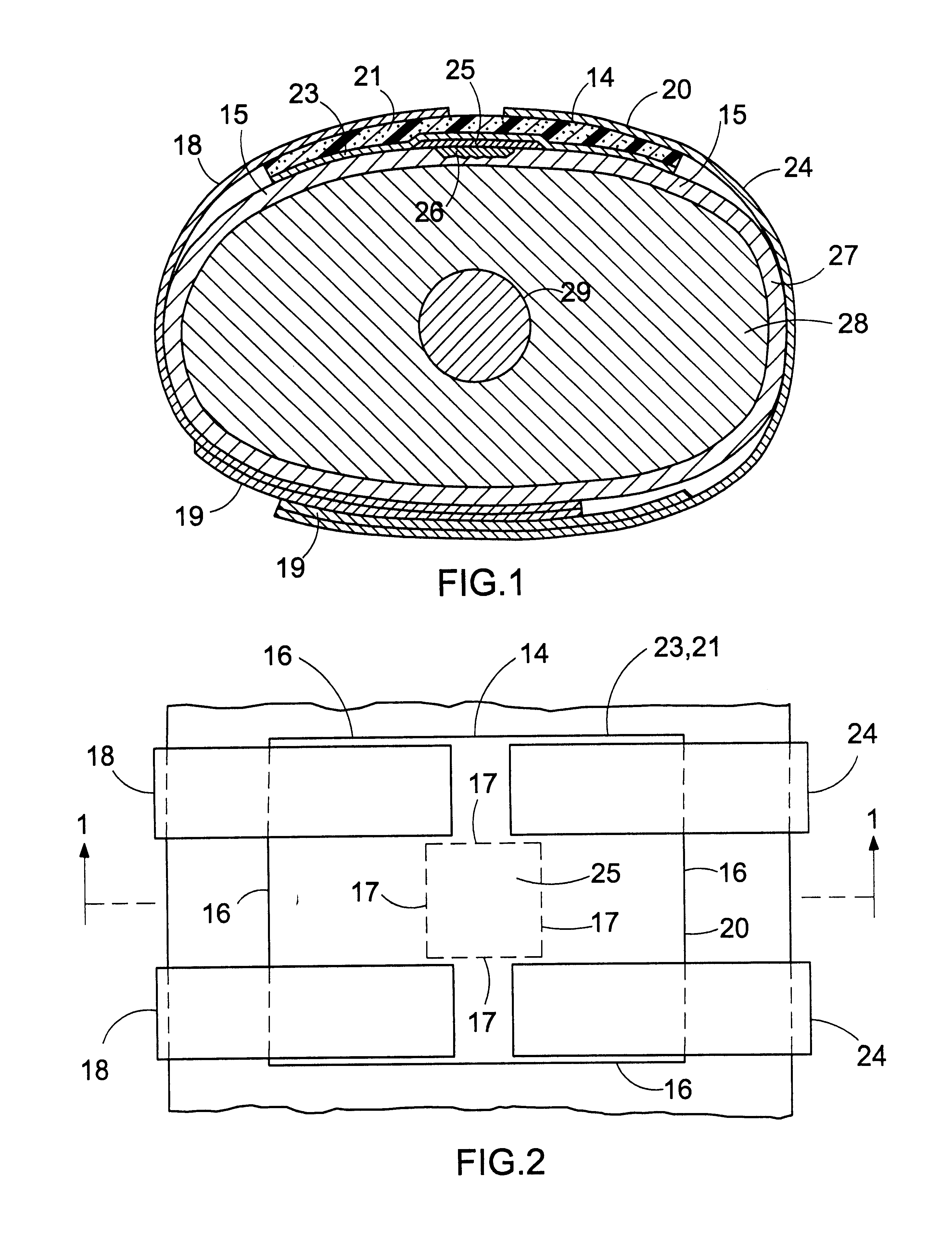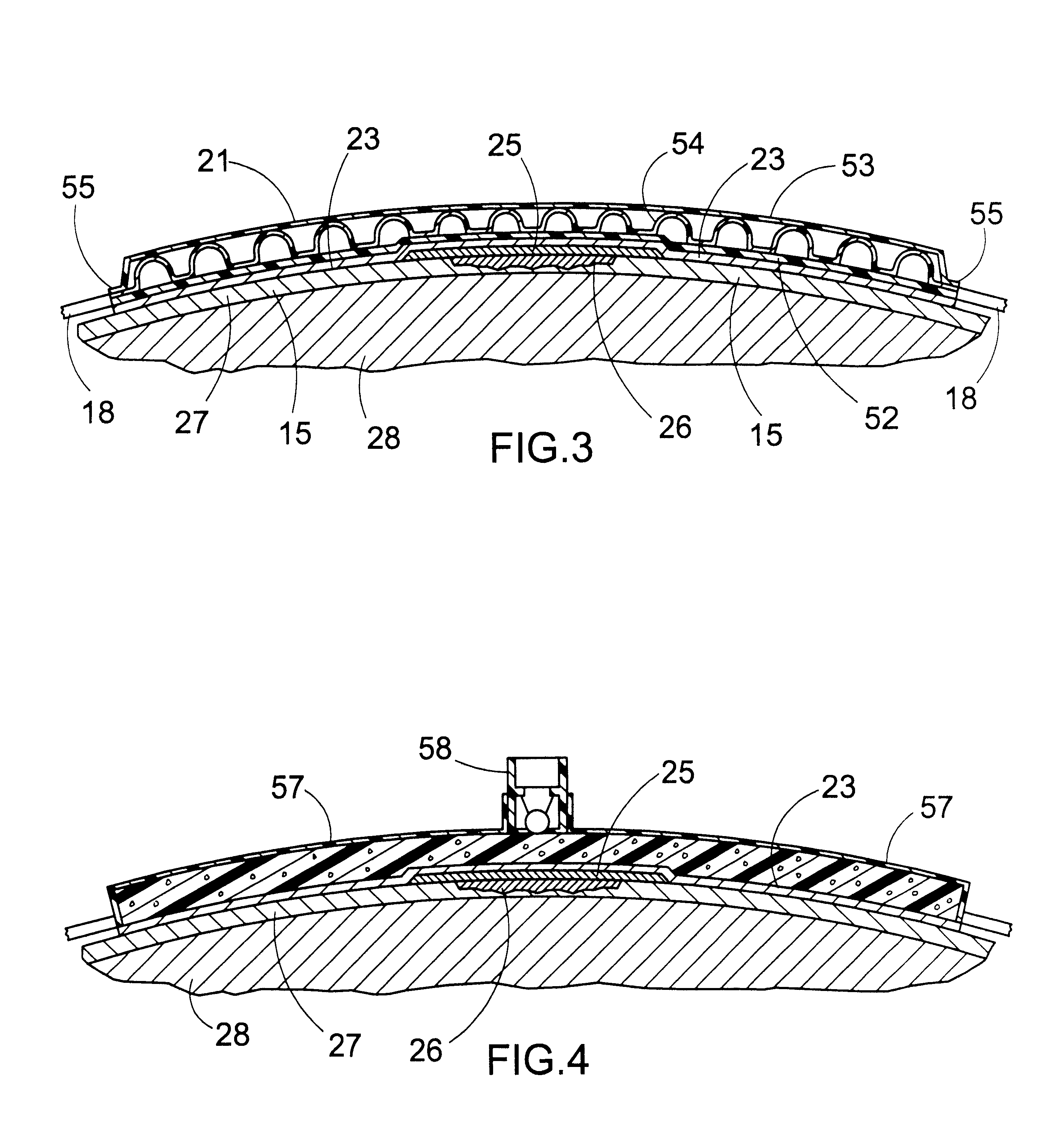Insulator-conductor device for maintaining a wound near normal body temperature
a technology of insulation-conductor and wound, which is applied in the field of insulation-conductor devices for maintaining wounds near normal body temperature, can solve problems such as exacerbated problems, and achieve the effects of eliminating the possibility of electrical shock, eliminating the possibility of overheating resulting in skin tissue burning, and being convenient to us
- Summary
- Abstract
- Description
- Claims
- Application Information
AI Technical Summary
Benefits of technology
Problems solved by technology
Method used
Image
Examples
Embodiment Construction
This invention is a wound covering which fits over standard or special purpose bandages, and covers both the wound area itself and major portions of the surrounding area of healthy skin of an extremity, such as a leg, arm, or foot, and maintains the wound close to normal body temperature by conserving and redistributing the body;s own heat energy by using a high efficiency thermal insulator to minimize heat loss from the wound and surrounding skin area, and a high efficiency thermal conductor for distributing heat from the surrounding skin to the wound area.
The wound covering consists of three basic elements; An outer layer of high efficiency thermal insulator constructed out of plyable low density foam which may be filled with a low thermal conductivity gas such as air, argon, carbon dioxide, krypton, nitrogen, or CC14F (Freon) or a gas under partial vacuum, an inner sheath of a high efficiency thermal conduction which consists of a thin sheath of high thermal conductor metal such ...
PUM
 Login to View More
Login to View More Abstract
Description
Claims
Application Information
 Login to View More
Login to View More - R&D
- Intellectual Property
- Life Sciences
- Materials
- Tech Scout
- Unparalleled Data Quality
- Higher Quality Content
- 60% Fewer Hallucinations
Browse by: Latest US Patents, China's latest patents, Technical Efficacy Thesaurus, Application Domain, Technology Topic, Popular Technical Reports.
© 2025 PatSnap. All rights reserved.Legal|Privacy policy|Modern Slavery Act Transparency Statement|Sitemap|About US| Contact US: help@patsnap.com



